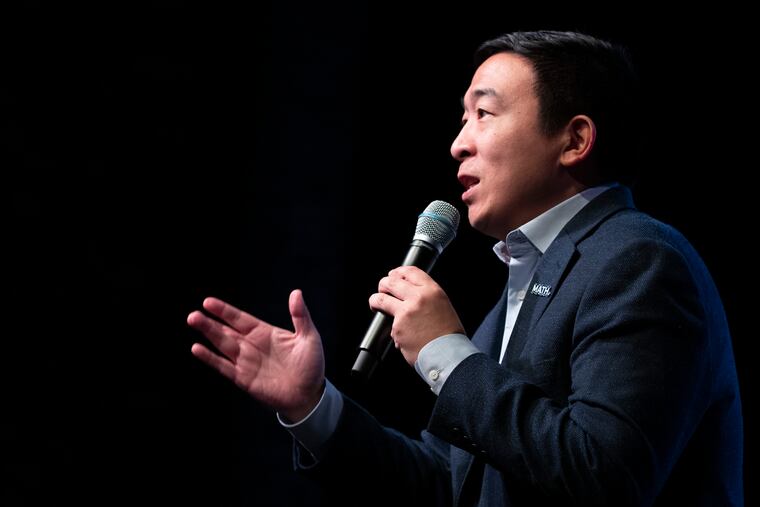Anti-Asian discrimination continues, months into the coronavirus | Opinion
The expectation that Asians play respectability politics still stings.

As concerns abound about how the U.S. will recover from the economic blows dealt by the coronavirus, Asian American businesses are taking hits. One report came out last week that five Asian-owned businesses were targeted for vandalism in San Jose, Calif. Meanwhile, the Center for Responsible Lending estimates that 90% of businesses owned by people of color will be shut out of coronavirus relief via the Paycheck Protection Program.
Andrew Yang argued in a Washington Post op-ed earlier this month that, faced with overt and subtle racism, Asians need to push back by being more American, “wearing more red white and blue.” His “solution” is deliberately simplistic.
Like Yang evoking the American flag, I too am thinking of colors. I’m seeing red. I’m mad that weeks and months passed before the city generally and our elected officials specifically took seriously what was as an economic disaster unraveling in Chinatown as early as last December. Businesses had suffered as bias assuming Asians in the city had the coronavirus — never mind that cases exploded too in Europe — caused a precipitous drop in patronage.
» READ MORE: Delaware’s top labor leader apologizes for anti-Asian coronavirus posts
The after-school programming at my organization, Asian Arts Initiative, saw an overnight decline in attendance around this time. Almost half of our students did not show up in February — but not due to avoiding Chinese people or Chinatown. Most of the program constituents come from those communities. No, these families were staying in because, as some told me: We are too sad about what’s happening in China. I think of one middle schooler in our after-school program who watched helplessly as a passerby spat racial slurs at their mother. Neither mother nor child felt they could respond. Incidents on the street and, more insidiously, online harassment persisted. College students, including a Pennsylvania one whose comments were publicized, ranted against Asian Americans on Instagram.
Petitions have circulated to enact “zero tolerance” of hate, but it’s left incumbent on overstretched local organizations to actually monitor and defend the safety of their communities.
I hope sincerely that anti-racism campaigns can move past anodyne good-faith assumptions. I’m positive nothing will change if we continue to base those efforts on expired notions of model citizen behavior like the ones Yang promotes. Those notions define “Asian” as a color: clear, blank, invisible, striving to be unseen in the hopes that will reverse the virulence of the racism. But what reason do we have to believe that’s true?
» READ MORE: Asian Americans already face a mental health crisis. Coronavirus racism could make it worse.
Color continues to tell the story of an America struggling against the coronavirus. When President Donald Trump told us to watch out for the “Chinese virus,” it reminded Asian Americans that we’re never white enough. The blue skies of spring mock us, stuck in our houses, echoing the ironic blue skies that characterized the morning of the 9/11 terrorist attacks. In the days following, brown and Muslim Americans were also incessantly told to demonstrate patriotism, line up behind Homeland Security doctrine, Freedom Fries, Islamophobia. Yet, no amount of “model minority” behavior would protect Muslim Americans from a spike in hate crimes the year after Trump was elected president.
Yang is lucky if he thinks driving away from a hostile glance in the parking lot of an upstate New York supermarket, described in his op-ed, is the end of his trauma. The trauma the rest of us are combatting is both mundane and profound: the multigenerational angst of having survived near-death trauma in a Southeast Asia ravaged by American wars, only to experience verbal harassment in the U.S. Young Asian Americans — like their parents and grandparents before them — are told: Go back to where you came from. And during this pandemic, trauma is refreshed for everyone by the ongoing decimation of human beings, due to the hubris of leaders who still won’t take the necessary steps to protect the most vulnerable in our society. Watching all this, I still see red.
Rather than wear red, white, and blue, I’m opting for black instead, to mourn the dead. I’m told wearing black is how Americans demonstrate mourning, devastation, and most importantly: resistance.
Anne Ishii is the executive director of the Asian Arts Initiative in Philadelphia.